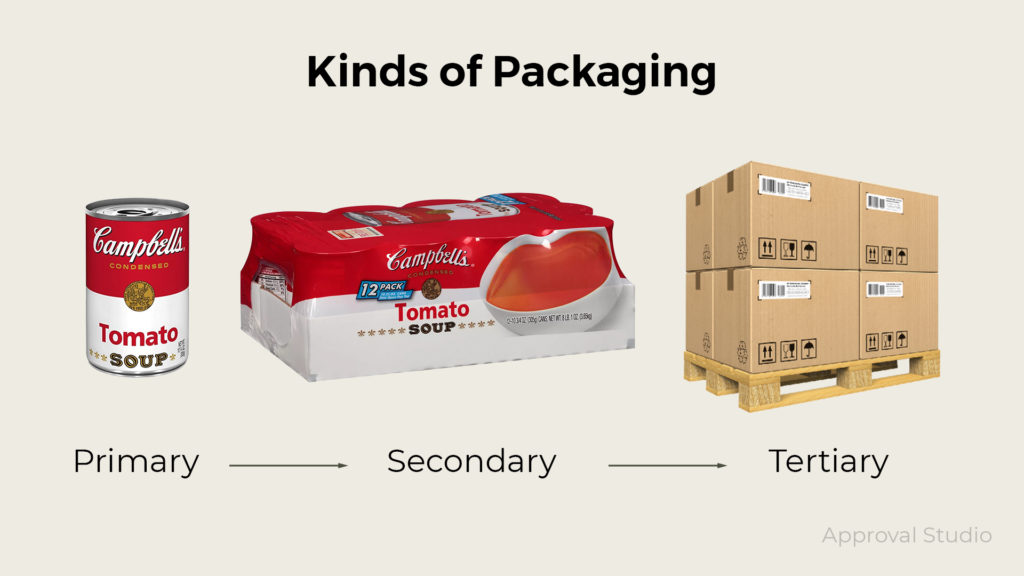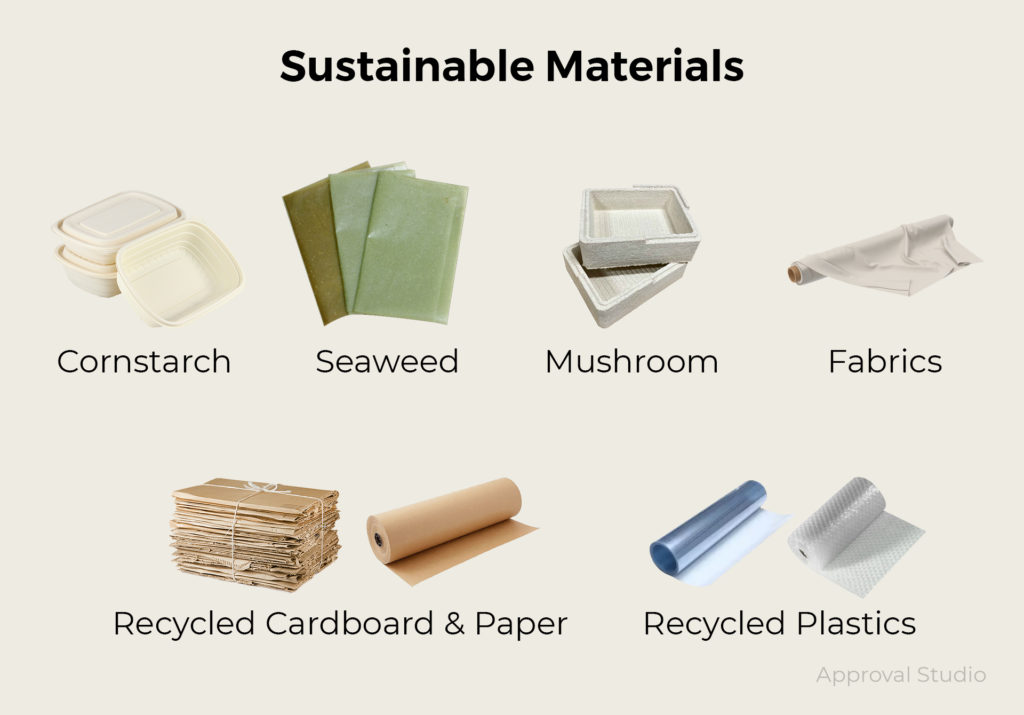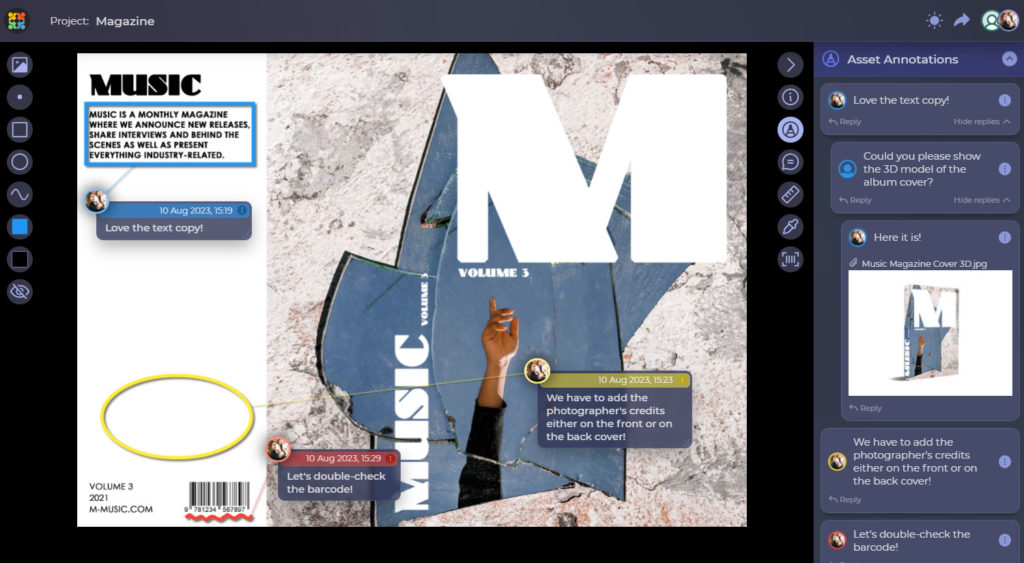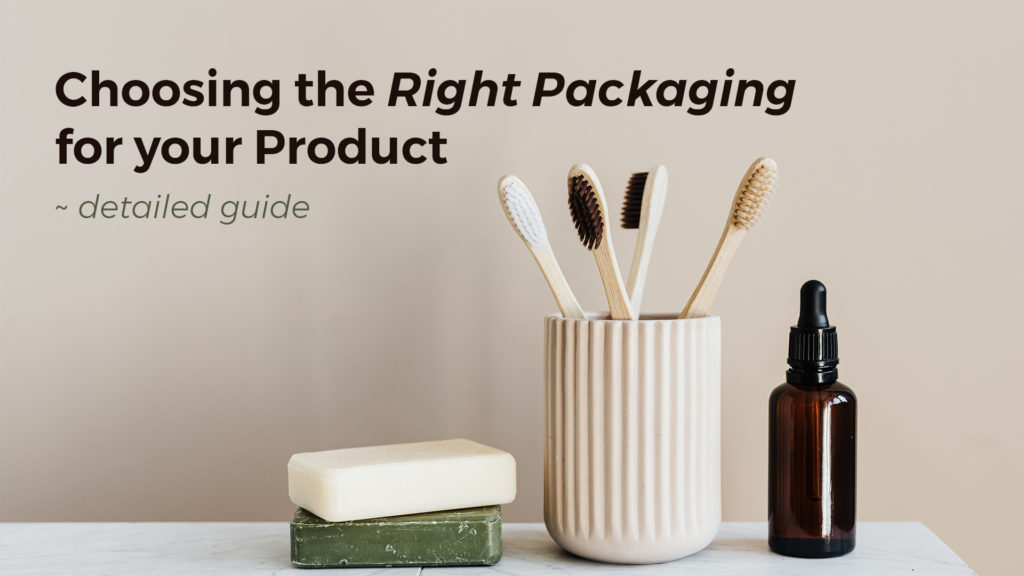The right and appropriate packaging is 90% of your product’s success. Why so? For example, you might have the best tea in the world, but would it be successful if the package is not standing out on the shelves? Would it become the world’s biggest hit if you do not have such advantages as sustainable packaging? Would the person repurchase your tea if you only have the weak paper box and all of these small tea leaves fall out of the box every time you are making tea?
Let’s deal with these questions and find the right packaging for your product!
Table of contents:
Let’s start with the packaging types…
Checking the packaging trends for 2022, we can outline such packaging types as cans, bottles, boxes, cartons, and others — check the inforgraphics below!

Each of these packaging types would be more or less suitable for particular products, but all of them aimed to provide the customer with close interaction with the product. This is a rational move since you cannot resist buying, for example, a fresh bakery when you can check the softness and its appearance. But be careful and do not eat everything while coming back home! Believe me. I have been there!
Coming back to our topic, no matter what product you are manufacturing, you decide on the packaging yourself. If your budget allows, then go for something unusual. According to IPSOS, 72% of Americans agreed that the design of the product influences their purchase decisions. I guess you agree that any cereals appeal to you much more if they are being sold in cans. Yep, that is something different from what you might see in the store in the cereals department. However, this packaging is fancy and looks premium, and I, personally, use that can for different needs till today.
HOWEVER, you should also pay attention to local regulations. This is also something that may influence and even drastically change the appearance of your final product. Also, that influences the budget. For example, the UK fights against using too much plastic, thus invented the Plastic Packaging Tax. The source says that “Any plastic packaging that contains less than 30% recycled plastic will have a levy applied, as will imported goods”.
Consequently, make sure to check out state laws. That will save you money and time.
…and continue with the packaging kinds

There are three major packaging kinds on the market today – primary, secondary and tertiary. If everyone clearly understands what the primary packaging is, the other two might cause some misunderstandings.
Secondary packaging is the solution for transporting your products grouped in the paper box, for example. As you might have guessed, such packaging is used for transportation or storing products in warehouses. The expediency of branding the boxes or any other secondary packaging kind is questionable and depends on the budget.
If the primary packaging should be perfectly designed, then the secondary packaging is less crucial since it does not interact with the end customer. However, if today is the day when you are ready to spend money, then, of course, it would look more premium if your secondary packaging were branded.
The last step is tertiary packaging. This is the packaging that is used for the transportation of secondary packaging items. In other words, a square set of boxes wrapped with the scotch tape 🙂 The only purpose of such bulk packaging is to make it easier to transport big consignments. I would suggest concentrating more on the quality of the packaging than its appearance. One mistake, and a weekly tea supply for the district is lost.
What about packaging materials?
Packaging materials are usually divided into two categories – rigid and flexible. Both have their pros and cons. First of all, they differ in production cost where flexible materials win by a mile. However, rigid packaging is far more reliable and looks superior. Let’s dive deeper into it.

Rigid packaging may show off with the feel of quality, better strength, no impact on the taste, and is usually made of easily recyclable materials. However, production costs are higher, leaves a higher carbon footprint, and takes much space if you do not use it again or recycle. The most popular rigid packaging is glass bottles or jars, cardboard, hard plastic, metal.
As far as flexible packaging is concerned, it can be appealing due to lower production costs. It is easy to use. Any design ideas can be easily applied to such materials. You need less space for packages and use fewer materials per package. However, there are some serious cons, such as a complicated recycling process, materials that need 1000+ years to degrade, and temperature-sensitive. The most common and popular flexible materials are soft plastic, paper, foil, paperboard, etc.
The cheapest packaging material is a cardboard box. Wooden materials would be one of the most expensive. Sustainable packaging may be both cheap and expensive – it depends on your choice. Let’s take a look at the cost bars below!

Sustainable packaging is worth mentioning separately. According to GWP, “it is the development and use of packaging which results in improved sustainability. This involves increased use of life cycle inventory (LCI) and life cycle assessment to help guide the use of packaging which reduces the environmental impact and ecological footprint.”
Every year sustainability becomes more of a duty thing than a trend for every company. Fortunately, a lion’s share of businesses understands that there is no future and no businesses without our planet. Also, customers’ preferences influence the situation as well. For example, 71% of people who were asked about their packaging preferences, told they would love to see brands using more recyclable packaging, informs IPSOS.
If you consider using sustainable packaging, here are the most popular types:
- Cornstarch Packaging
- Seaweed Packaging
- Mushroom Packaging
- Organic Fabrics
- Recycled Cardboard and Paper
- Eco-Friendly Plastic and Recycled Plastics
The price of sustainable materials lowers every year due to the high demand. The faster we make it a rule, the cheaper the production cost will be.

Note: we have not mentioned the luxury packaging since this is a vast area for custom designs and very different prices.
What is the right packaging for your product?
The answer depends on many factors such as budget, state regulations, logistics, and many more. However, if I were up to manufacturing my product, I would love to choose eco-friendly packaging, which is easily recyclable and is made of glass or any other rigid material. Also, I would concentrate more on the primary packaging to stand out on the shelves. Such packaging will always be more appealing to customers and will make as little impact on the environment as possible.
As you can see, there are specific answers, but usually, most of the decisions made depend on your unique conditions. However, what we know for sure is the following packaging dos and don’ts!
We also have this material in a form of a cool infographic that you can download right here.
Packaging DOs and DON’Ts
DOs:
- Do check packaging regulations. Imagine that you are moving your product around your country by the standard rate for a particular box size. Later, you decided to expand to other countries, but there are strict regulations regarding the packaging size or materials. Be ready to pay much money for being inattentive 🙂
- Do display legally required information. Make sure you mention all the needed info on the packaging. Otherwise, you would need to redo the whole circulation, or the product will be frozen for months.
- Do use proofing software for packaging design. Avoid human factor mistakes, check barcodes, sizes and other factors according to regulations, proofread the text for required info, compare versions, and make sure your packaging is up to the task of bringing new customers to you.
- Do evoke emotions. People notice small details. It would be great to create a strong positice emotional response. For example, you can refer to childhood memories if that is appropriate. If you care about details, one will prefer your product to others.
- Do protect the content of the package. Less packaging is better. However, there should be a stopping point so the product will not be spoiled before it reaches shelves.
DON’Ts:
- Don’t mislead the customer. Do not mention some superficial activities of your product if it does not provide them. Customers remember everything, trust me.
- Don’t follow every trend. There is one term in marketing – “Spike of hope.” It means a quick growth of traffic, but this is a short-term thing. Then goes the “spike of nope,” where you perform even worse than before. The same happens to trends in packaging – make sure to research whether your customer loves the trend. It would avoid the “spike of nope” for your product.
- Don’t make much packaging waste. If your product is wrapped with five different layers like me in all my winter clothes in February, you should consider being more sustainable. It would save you money since customers just throw away the superfluous parts, and you do not need them. Also, the environment will thank you.
- Don’t make an overloaded design. We know how every company wants to highlight its advantage by writing it on the packaging. However, overwhelmed design, even with tons of product benefits mentioned, is repellent.
- Don’t use the wrong box size. This one is clear. There is no need to use a 5kg box for the small product. It is a waste of materials and packaging space.
- Don’t neglect the research. This should have been the very first by its importance. If your packaging is 90% of the product’s success, then deep research is 90% of the successful design of the package.
Use approval software
Approval software like Approval Studio will be your best friend regarding product packaging. It helps avoid the most significant issue in design packaging – the human factor. It is not a secret that we cannot work as artificial intelligence and make no mistakes. Using approval software will reduce the human factor almost to 0. How?

For example, we have a barcode scanner that will help your packaging ensure you have a legitimate barcode number. Also, the tool has compared modes that highlight changes between versions, and you can instantly see what has been changed. Spellchecker helps to avoid spelling mistakes – you will not need to ditch all the packages because of not including some legal info, lose money on that, and redo everything. We do know that even the small spelling mistake matters. And these are only a couple of features that will make your life easier working in the packaging industry.
You can try out Approval Studio as your print approval software, see if it fits your needs, and ask us any questions in your 14-day free trial period. We will be more than happy to get your feedback!
Answers to the questions at the beginning 🙂
If you got here, then you probably do not need those answers anymore. The point of this article is to see how the modern world is more than demanding to every piece and detail of the product you put our there, so you need to adapt. Do not be afraid of experiments! Try to stand out, choose your packaging carefully, develop your own style and brand, and people will love you.
And we at Approval Studio are always ready to help you with that.
Cheers!

 TEAM SOLUTIONS
TEAM SOLUTIONS

 WORKFLOW SOLUTIONS
WORKFLOW SOLUTIONS

 REVIEW TOOL
REVIEW TOOL PROJECT MANAGEMENT
PROJECT MANAGEMENT TOOLS & INTEGRATIONS
TOOLS & INTEGRATIONS CLIENT INTERVIEWS
CLIENT INTERVIEWS







![660376[1] 660376[1]](https://approval.studio/wp-content/uploads/elementor/thumbs/6603761-qdggwcisb076f7x5giotppxq66kg87ehjuo5mdrd3y.png)

